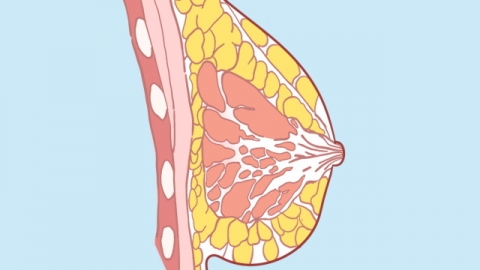What Causes Nipple Discharge During Pregnancy?
Generally, nipple discharge during pregnancy may be caused by hormonal changes, breast duct dilation, mastitis, hyperprolactinemia, fibroadenoma of the breast, and other factors. Symptomatic management may involve general treatment, medication, or surgical treatment. If symptoms are severe, timely medical consultation is recommended for examination and targeted treatment. Detailed explanations are as follows:

1. Hormonal Changes
During pregnancy, significant hormonal fluctuations occur within a woman's body, particularly increased estrogen and progesterone levels, which stimulate breast tissue development in preparation for lactation. This may lead to nipple discharge, possibly accompanied by breast tenderness, sensitivity, or enlargement. Typically, no specific treatment is required. It is recommended to wear appropriate supportive undergarments and maintain breast hygiene.
2. Breast Duct Dilation
As pregnancy progresses, the breast ducts gradually expand to meet lactation needs. During this process, small amounts of milk may be secreted prematurely, making the breasts feel firmer and the nipple area more sensitive. It is recommended to avoid squeezing or stimulating the nipples and wear well-fitting supportive undergarments.
3. Mastitis
Bacterial infection of the breast tissue during pregnancy can cause an inflammatory response, leading to abnormal nipple discharge, usually accompanied by symptoms such as breast redness, swelling, pain, and fever. It is recommended to follow medical advice and use medications such as Minocycline Hydrochloride Capsules, Bromocriptine Mesylate Tablets, and Ruping Xiao Capsules to alleviate symptoms.
4. Hyperprolactinemia
Elevated prolactin levels beyond the normal range during pregnancy may cause increased nipple discharge, stimulating breast tissue to produce milk. Symptoms often include headache, blurred vision, and menstrual irregularities. It is recommended to follow medical advice and use medications such as Vitamin B6 Tablets, Ethinylestradiol Cyproterone Acetate Tablets, and Levodopa Tablets to alleviate symptoms.
5. Fibroadenoma of the Breast
Although benign breast tumors are uncommon during pregnancy, they may be detected during this period. These tumors may compress breast ducts, causing discharge, and a painless lump may be felt within the breast. Treatment during pregnancy may need to be postponed until after childbirth, when procedures such as vacuum-assisted excision or Mammotome surgery may be considered.
Regular check-ups during pregnancy are recommended to monitor personal health and ensure timely treatment to avoid delays in managing conditions.
References
[1] Fan Yubo, Chen Rong. Advances in Diagnosis and Treatment of Hyperprolactinemia [J]. Journal of Practical Obstetrics and Gynecology, 2024, 40(12): 948-951.
[2] Li Zhonghui, Li Junyan. Comparative Analysis of Clinical Outcomes of Different Incision Approaches for Fibroadenoma Removal [J]. Henan Journal of Surgery, 2024, 30(06): 80-82.




